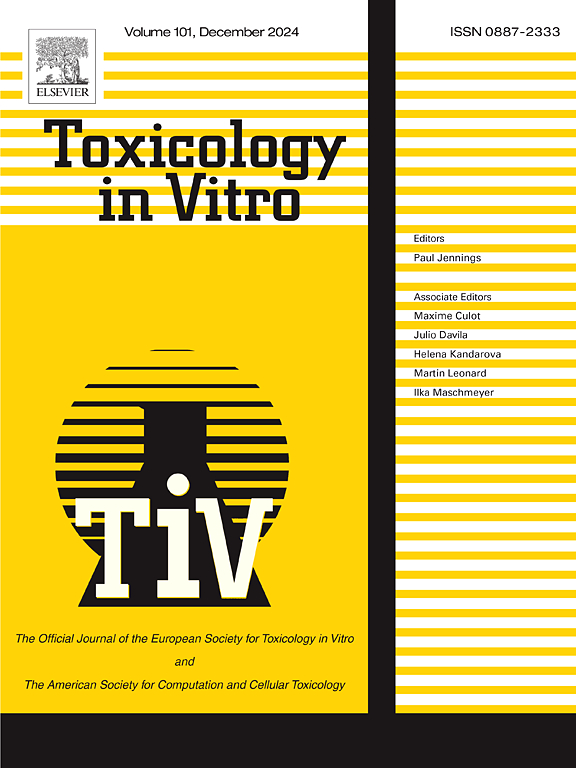Assessing the safety of midazolam: A comprehensive analysis of adverse events from FAERS
IF 2.6
3区 医学
Q3 TOXICOLOGY
引用次数: 0
Abstract
Midazolam, a potent sedative from the benzodiazepine class, is widely used in anesthesia and intensive care, but it has been linked to severe and life-threatening cardiopulmonary adverse events (AEs). This study investigated real-world AEs associated with midazolam using data from the U.S. Food and Drug Administration (FDA) adverse event reporting system (FAERS) from 2004 to 2024. Disproportionality analysis was performed using four signal detection methods—reporting odds ratio, proportional reporting ratio, Bayesian confidence propagation neural network, and multi-item gamma Poisson shrinker—to assess midazolam-related AEs. A total of 2952 AE reports were identified, involving seven system organ classes, with 31 specific AEs meeting criteria across all four algorithms. Unexpected AEs not listed in the product label, such as seizure, coma, respiratory failure, anaphylactic shock, and hypothermia, were also observed, with most AEs occurring within the first 10 days of midazolam use. This pharmacovigilance study highlights the need for increased awareness of serious and unexpected AEs, including respiratory failure, anaphylactic shock, hypothermia, and metabolic acidosis, to promote safer use of midazolam in clinical practice.
评估咪达唑仑的安全性:FAERS不良事件的综合分析。
咪达唑仑是苯二氮卓类药物中的一种强效镇静剂,被广泛用于麻醉和重症监护,但它与严重和危及生命的心肺不良事件(AEs)有关。本研究利用美国食品和药物管理局(FDA)不良事件报告系统(FAERS)2004年至2024年的数据,调查了现实世界中与咪达唑仑相关的不良事件。使用四种信号检测方法--报告几率比、报告比例比、贝叶斯置信度传播神经网络和多项目伽马泊松收缩器进行了比例失调分析,以评估与咪达唑仑相关的AE。共发现 2952 例 AE 报告,涉及七个系统器官类别,其中 31 例特定 AE 符合所有四种算法的标准。还观察到了产品标签中未列出的意外AE,如癫痫发作、昏迷、呼吸衰竭、过敏性休克和体温过低,大多数AE发生在使用咪达唑仑的头10天内。这项药物警戒研究强调,有必要提高对呼吸衰竭、过敏性休克、低体温和代谢性酸中毒等严重和意外AE的认识,以促进在临床实践中更安全地使用咪达唑仑。
本文章由计算机程序翻译,如有差异,请以英文原文为准。
求助全文
约1分钟内获得全文
求助全文
来源期刊

Toxicology in Vitro
医学-毒理学
CiteScore
6.50
自引率
3.10%
发文量
181
审稿时长
65 days
期刊介绍:
Toxicology in Vitro publishes original research papers and reviews on the application and use of in vitro systems for assessing or predicting the toxic effects of chemicals and elucidating their mechanisms of action. These in vitro techniques include utilizing cell or tissue cultures, isolated cells, tissue slices, subcellular fractions, transgenic cell cultures, and cells from transgenic organisms, as well as in silico modelling. The Journal will focus on investigations that involve the development and validation of new in vitro methods, e.g. for prediction of toxic effects based on traditional and in silico modelling; on the use of methods in high-throughput toxicology and pharmacology; elucidation of mechanisms of toxic action; the application of genomics, transcriptomics and proteomics in toxicology, as well as on comparative studies that characterise the relationship between in vitro and in vivo findings. The Journal strongly encourages the submission of manuscripts that focus on the development of in vitro methods, their practical applications and regulatory use (e.g. in the areas of food components cosmetics, pharmaceuticals, pesticides, and industrial chemicals). Toxicology in Vitro discourages papers that record reporting on toxicological effects from materials, such as plant extracts or herbal medicines, that have not been chemically characterized.
 求助内容:
求助内容: 应助结果提醒方式:
应助结果提醒方式:


